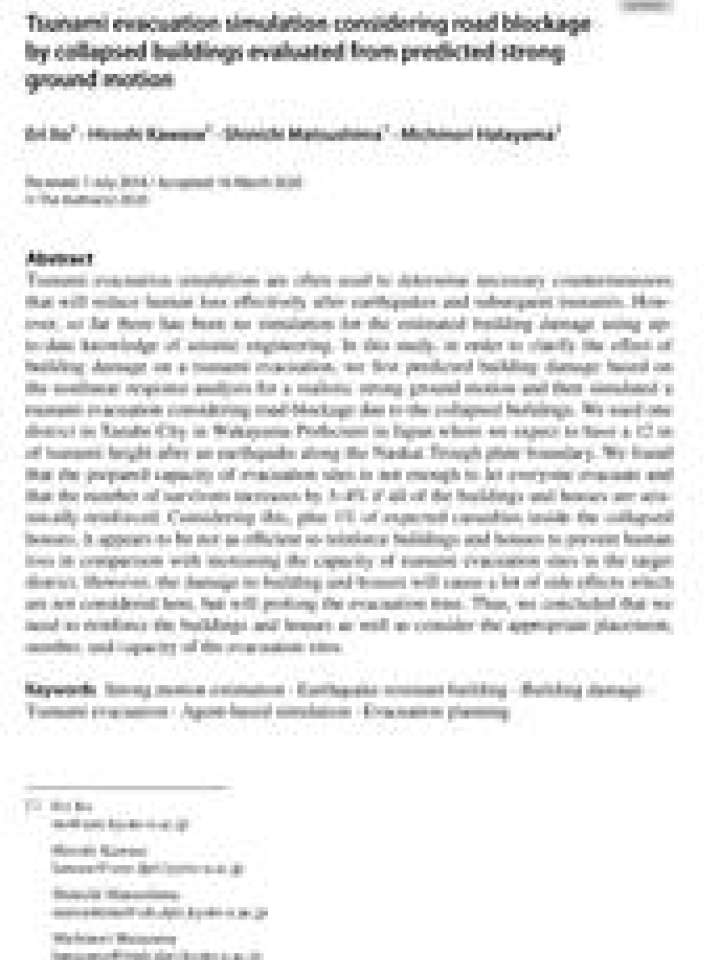Tsunami evacuation simulation considering road blockage by collapsed buildings evaluated from predicted strong ground motion
Tsunami evacuation simulations are often used to determine necessary countermeasures that will reduce human loss effectively after earthquakes and subsequent tsunamis. However, so far there has been no simulation for the estimated building damage using up-to-date knowledge of seismic engineering. In this study, in order to clarify the effect of building damage on a tsunami evacuation, the study first predicted building damage based on the nonlinear response analysis for a realistic strong ground motion and then simulated a tsunami evacuation considering road blockage due to the collapsed buildings. The paper used one district in Tanabe City in Wakayama Prefecture in Japan where it was expected to have a 12 m of tsunami height after an earthquake along the Nankai Trough plate boundary. The study found that the prepared capacity of evacuation sites is not enough to let everyone evacuate and that the number of survivors increases by 3–4% if all of the buildings and houses are seismically reinforced. Considering this, plus 1% of expected casualties inside the collapsed houses, it appears to be not as efficient to reinforce buildings and houses to prevent human loss in comparison with increasing the capacity of tsunami evacuation sites in the target district. However, the damage to building and houses will cause a lot of side effects which are not considered here, but will prolong the evacuation time. Thus, the conclusions need to reinforce the buildings and houses as well as consider the appropriate placement, number, and capacity of the evacuation sites.
Explore further
